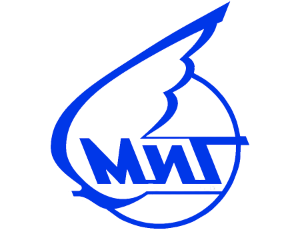Buran meaning "Snowstorm" / Blizzard
|
||||||||||||||||||||||||||||||||||
|
|
.
History Buran programme (Russian: Буран, IPA: [bʊˈran], "Snowstorm", "Blizzard"),
also known as the "VKK Space Orbiter programme"

The Buran programme (Russian: Буран, IPA: [bʊˈran], "Snowstorm", "Blizzard"), also known as the "VKK Space Orbiter programme" (Russian: ВКК «Воздушно-Космический Корабль», lit. 'Air and Space Ship'), was a Soviet and later Russian reusable spacecraft project that began in 1974 at the Central Aerohydrodynamic Institute in Moscow and was formally suspended in 1993. In addition to being the designation for the whole Soviet/Russian reusable spacecraft project, Buran was also the name given to orbiter 1K, which completed one uncrewed spaceflight in 1988 and was the only Soviet reusable spacecraft to be launched into space. The Buran-class orbiters used the expendable Energia rocket as a launch vehicle.
History of the Buran programme

Programme development
The development of the Buran began in the early 1970s as a response to the U.S. Space Shuttle program. Soviet officials were concerned about a perceived military threat posed by the U.S. Space Shuttle. In their opinion, the Shuttle's 30-ton payload-to-orbit capacity and, more significantly, its 15-ton payload return capacity, were a clear indication that one of its main objectives would be to place massive experimental laser weapons into orbit that could destroy enemy missiles from a distance of several thousands of kilometres. Their reasoning was that such weapons could only be effectively tested in actual space conditions and that to cut their development time and save costs it would be necessary to regularly bring them back to Earth for modifications and fine-tuning. Soviet officials were also concerned that the U.S. Space Shuttle could make a sudden dive into the atmosphere to drop nuclear bombs on Moscow.
Photo Gallery
Buran programme (Russian: Буран, IPA: [bʊˈran], "Snowstorm", "Blizzard"), also known as the
"VKK Space Orbiter programme"


Buran programme (Russian: Буран, IPA: [bʊˈran], "Snowstorm", "Blizzard"), also known as the "VKK Space Orbiter programme"
General Info
-
-
-
- Total mass of structure and landing systems: 42,000 kg (93,000 lb)
- Mass of functional systems and propulsion: 33,000 kg (73,000 lb)
- Maximum payload: 30,000 kg
- Maximum liftoff weight: 105,000 kg
-
-
Powerplant
- Length: 36.37 m (119.3 ft)
- Wingspan: 23.92 m (78.5 ft)
- Height on gear: 16.35 m (53.6 ft)
- Payload bay length: 18.55 m (60.9 ft)
- Payload bay diameter: 4.65 m
- Wing chine sweep: 78 degrees
- Wing sweep: 45 degrees
-
-
Performance
- Total orbital manoeuvring engine thrust: 17,600 kgf
- Orbital manoeuvring engine specific impulse: 362 seconds (3.55 km/s)
- Total manoeuvring impulse: unknown
- Total RCS thrust: 14,866 kgf
- Average RCS specific impulse: 275–295 seconds (2.70–2.89 km/s)
- Normal maximum propellant load: 14,500 kg (32,000 lb))
-
-
Projected flights
In 1989, it was projected that Buran would have an uncrewed second flight by 1993, with a duration of 15–20 days.[However, the dissolution of the Soviet Union led to funding drying up and the Buran programme was officially cancelled in 1993.
-
-
.
Links to Youtube & Others
The only orbital launch of a Buran-class orbiter, 1K1 (1К1: first orbiter, first flight) occurred at 03:00:02 UTC on 15 November 1988 from Baikonur Cosmodrome launch pad 110/37. Buran was lifted into space, on an uncrewed mission, by the specially designed Energia rocket.
Buran meaning "Snowstorm"
The crew module was an all-metal, welded, pressurised compartment housing the crew's workplaces, control, and life support systems. It had three decks.
Youtube Link
The Buran orbiter was built around the airframe, which was its main structural component, since all other components were attached to it.









.png)



